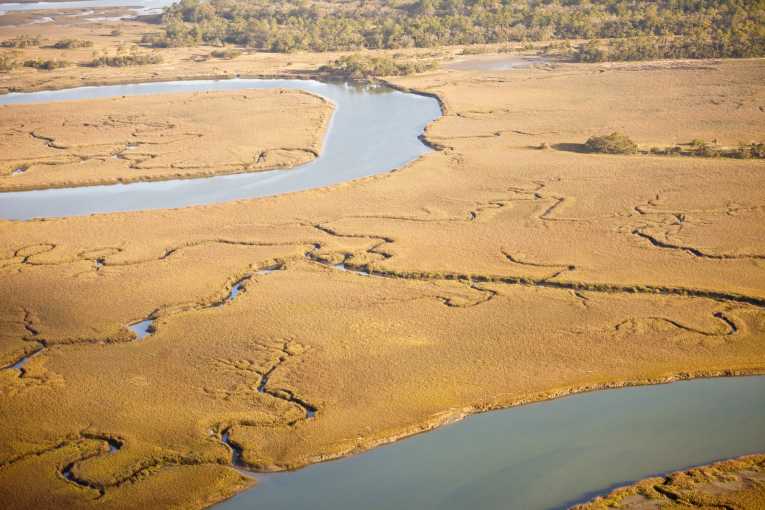Sea-level rises from global warming remain one of the big unknowns in the jostling crowd of climate threats. We know that warming water expands - and so coastal communities will be threatened, as the sea swells in response to rising temperatures. But what about the melting of the land-based ice-sheets of Greenland and Antarctica? And the disappearing mountain glaciers of the Rockies and the Andes? How will a warming world spill these frozen waters into the sea, and so back onto our low-lying cities? Those questions are something that climate scientists try to model, but which they still find difficult to predict.
One way to help knock down that uncertainty is to turn to past records of sea-level fluctuations, to see if they can point to the future. Tie these records tightly enough to detailed temperature records, and scientists may get a better grasp on what their models should be showing. That's what a research team, including Penn State's Michael Mann, have done - looking to North Carolina's salt marshes for a fresh insight into the sea-level conundrum. The results are published online in today's Proceedings of the National Academy of Sciences.
The international team of scientists turned to North Carolina, in part because this area of the world has been geologically quiet for many millennium. Previous sea-level reconstructions are in those parts of the world still on the move - due to tectonic shifts, or where the land is rebounding from the burden of the last Ice Age. That makes deciphering which sea-level changes are down to temperature fluctuations more difficult.
But the marshes off of the US east coast have had a much simpler history - so taking account of the slow resettling of the earth's foundations is much easier here. In order to work out the level of the sea over the last two-thousand years, the team looked at thick slices of muddy sediment in the sheltered waters of the Pamlico Sound. These contain foramnifera, microscopic fossils which can tell scientists the depth of the overlying waters. They were dated accurately using a combination of radiocarbon and pollen sequences.
The results tallied well with other reconstructions, and with local and global tidal gauge records. 'The temperature and sea level reconstructions were determined independently from each other, and yet each shows what we would expect based on the other," said Mann. "Higher temperatures correspond with higher rates of sea level change and vice versa."
The story of sea level changes fitted a reasonably well-known narrative - and emphasized the suddenness of the most recent changes ascribed to man's tinkering with the climate.
From 100 years BC until 950 AD, sea levels held fairly constant, but with the regional warming of the northern hemisphere, known as the Medieval Warming period, sea levels rose by 2 inches per century. That rise halted with the onset of the 'Little Ice Age' when sea-levels fell slightly. But once the industrialization of the 19th century was well underway, the tide turned firmly back to rising sea levels - and dramatically so.
Over the last century, sea-levels rose at the equivalent of 8-inches per century - a rate unprecedented in the 2000 year-old record. The paper concludes "..in North Carolina the mean rate of rise was 2.1 mm/y in response to 20th century warming. This historical rate of rise was greater than any other persistent, century-scale trend during the past 2,100 years,' the researchers report. That can be seen as an ominous pointer to the future for low-lying communities.
Top Image Credit: © Wollwerth Imagery










